What is Content Marketing?
Social media advertising have become integral components of a successful digital marketing strategy. Online platforms provide an excellent opportunity to reach a vast audience and promote your brand. By leveraging the power of social media, businesses can connect with their target audience and drive more revenue.
One of the primary advantages of social media advertising is its ability to target specific demographics. By creating targeted ads that are tailored to the needs and interests of your audience, you can reach the people who are most likely to be interested in your products or services. Social media platforms also offer a range of ad formats, including video ads, image ads, and carousel ads, which can be customized to fit your specific needs.
In addition to social media advertising, content marketing is also a powerful tool for businesses looking to promote their brand on social media. By creating high-quality, engaging content that is designed to educate and entertain your audience, you can build trust and credibility with your followers. This, in turn, can lead to more engagement and shares, which can help to increase your reach and drive more traffic to your website.
Overall, social media advertising and content marketing are two essential strategies for businesses looking to build their online presence and connect with their target audience. By leveraging the power of digital platforms and creating high-quality content, businesses can establish themselves as trusted authorities in their industry and drive more profitable customer action.

Why is Content Marketing Important?
Its essential for any business that wants to establish a strong online presence and drive traffic, leads, and sales. Here are some of the benefits of content marketing
- It helps you build trust and credibility with your audience.
- It allows you to target specific demographics and personas.
- It increases your website’s search engine visibility and ranking.
- It generates leads and sales at a lower cost than traditional marketing.
- It provides valuable insights into your audience’s needs and interests.
Understanding Your Audience
Before you start creating content, you need to understand your audience. Who are they? What are their pain points, goals, and interests? What are their preferred channels and formats? Conducting market research and creating buyer personas can help you answer these questions and tailor your content to your audience’s needs.
Types of Content Marketing
There are various types of marketing that you can use to reach your audience and achieve your goals. Here are some examples:
- Blogging: Writing blog posts on your website or guest posting on other websites.
- Digital Platforms: Sharing posts, videos, and stories on platforms like Facebook, Twitter, Instagram, and LinkedIn.
- Video marketing: Creating and sharing videos on YouTube, Vimeo, or your website.
- Infographics: Creating visual representations of data and information to share on your website or on any Digital Platform.
- E-books and whitepapers: Creating longer-form content that provides in-depth information on a topic.
- Webinars and podcasts: Hosting live or recorded events where you share insights and answer questions.
Developing a Content Strategy
To succeed in marketing, you need a solid strategy. Here are the steps to develop a marketing plan:
- Define your goals: What do you want to achieve with Marketing? Brand awareness? Lead generation? Sales?
- Identify your target audience: Who do you want to reach with your content?
- Research keywords and topics: What are the topics and keywords that your audience is interested in? What are the trending topics in your industry?
- Choose your channels and formats: What are the best channels and formats to reach your audience and achieve your goals?
- Create a content calendar: Plan and schedule your content to ensure consistency and relevance.
- Measure and analyze your results: Use analytics tools to track your content’s performance and adjust your strategy accordingly.
Best Practices for Content Creation
To create effective content, you need to follow some best practices. Here are some tips:
- Use headlines and subheadings to organize your content and make it easier to read.
- Use visuals like images, videos, and infographics to make your content more engaging.
- Write in a conversational tone and use personal pronouns to connect with your audience.
- Use storytelling techniques to make your content more memorable.
- Include a clear call-to-action to encourage your audience to take action
